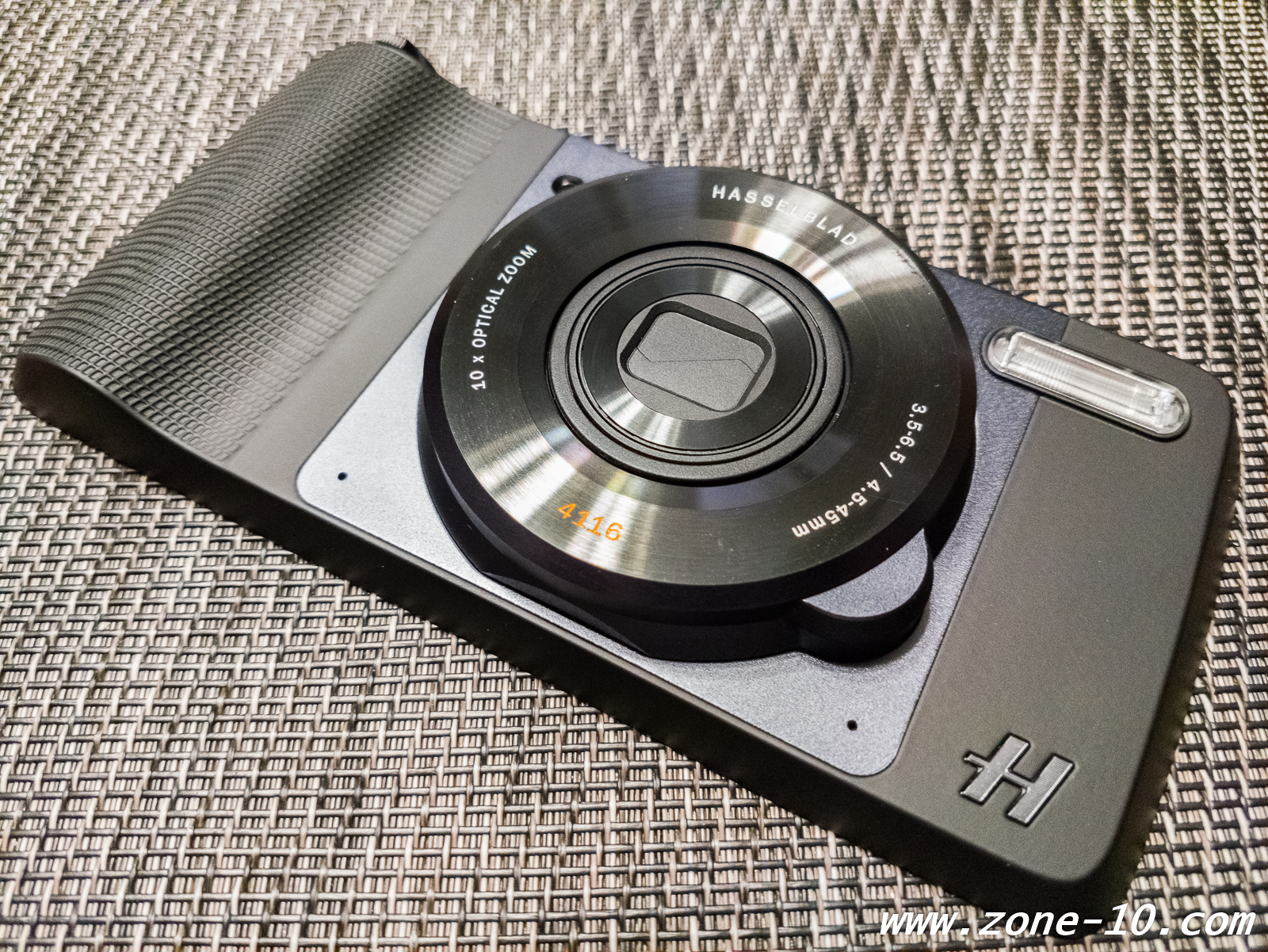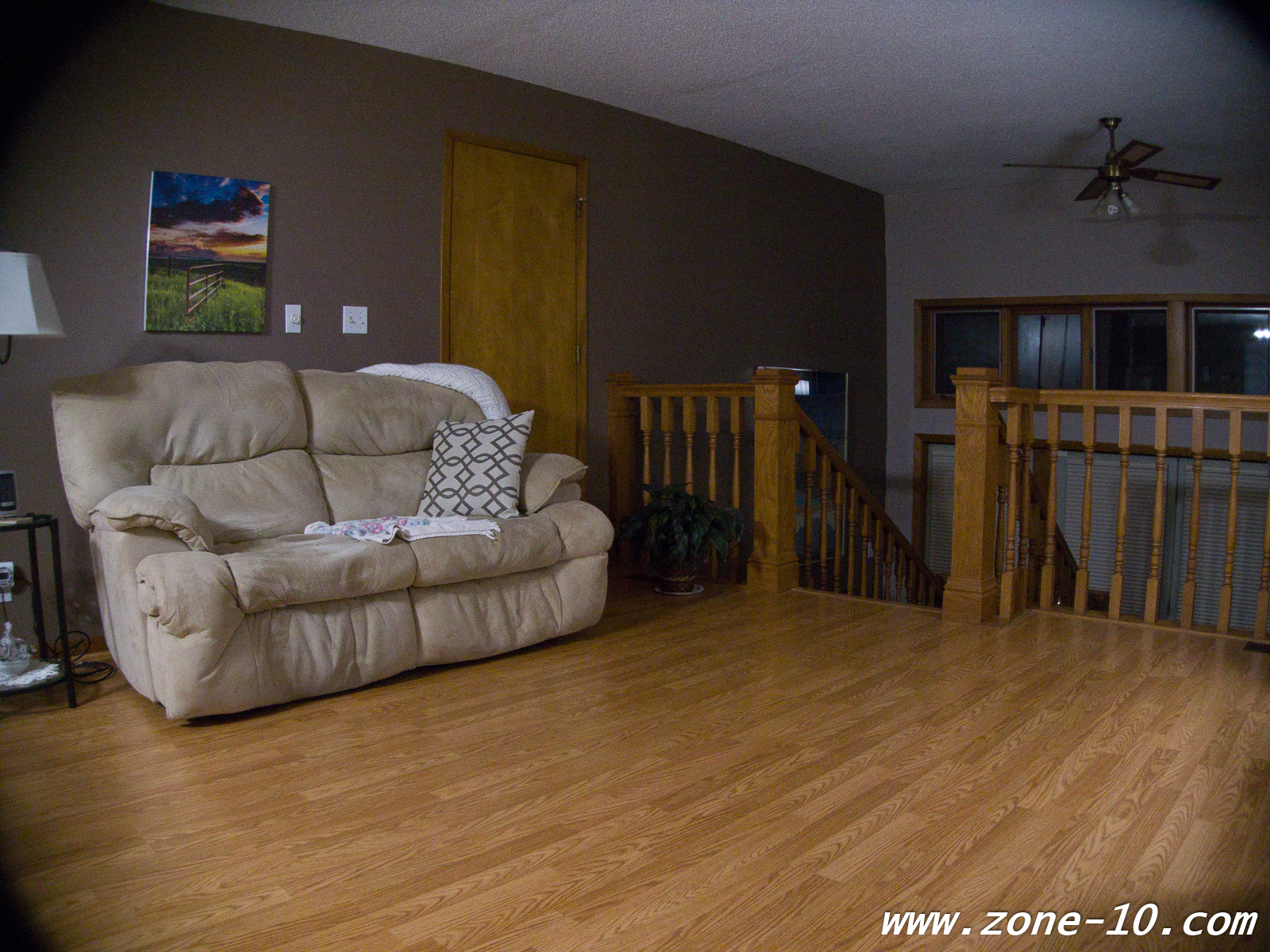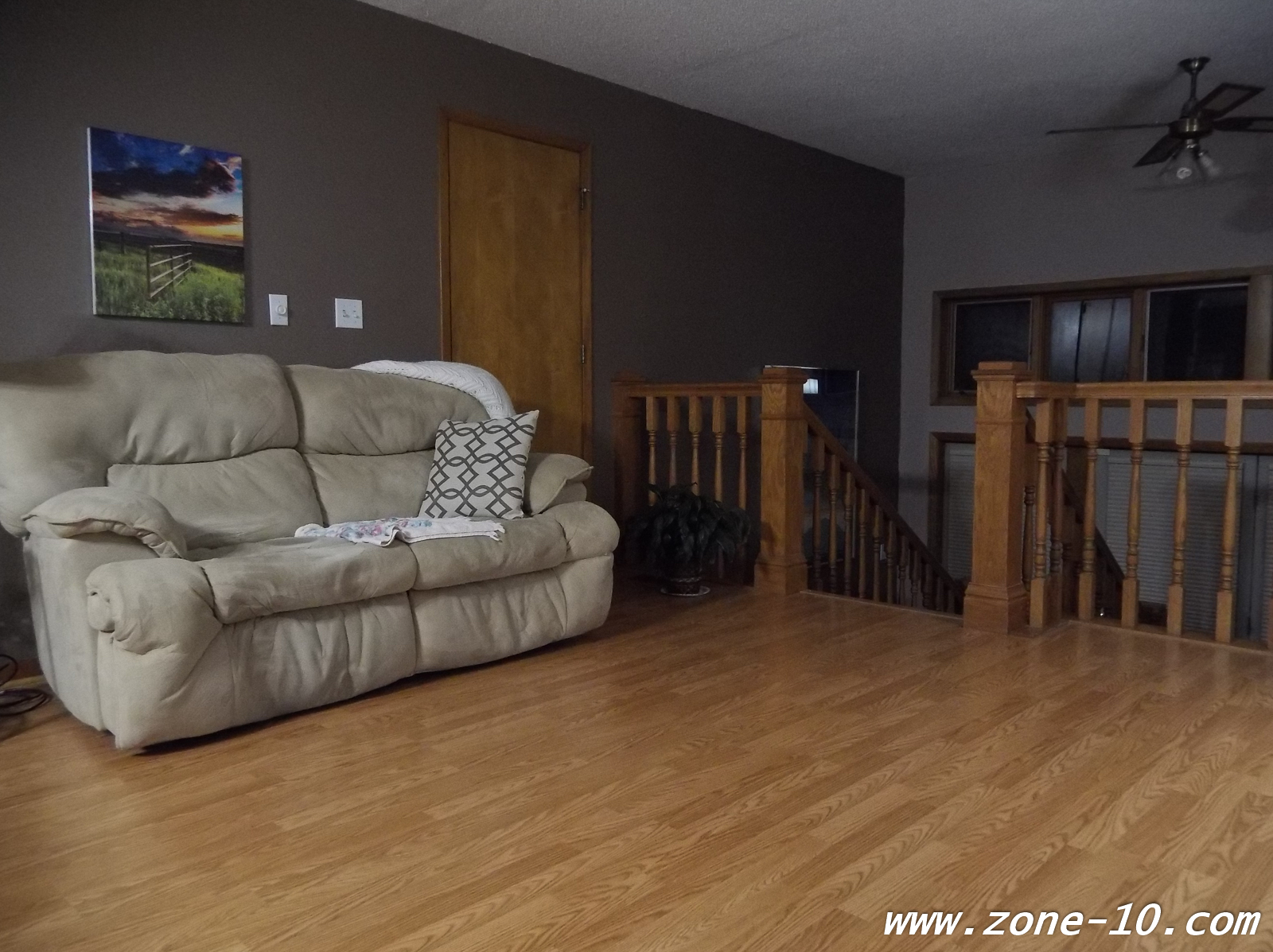
Motorola has introduced the Z series Android cellphones with the Moto Mods interface. This allows the user to change backs to the cellphone with a magnetized snap on mounting surface. Whether it’s just a back cover, a JBL loudspeaker, a video projector, a battery pack or a camera, it’s just a matter of prying a back off and sticking the new one on. The cellphone is able to access and use these interchangeable backs without turning it on or off. It just works.
The Hasselblad 4116 True Zoom is a camera attachment that turns the cellphone into an integrated Android cellphone and point and shoot camera. When you attach the camera unit, the internal forward-facing camera is automatically disabled and the camera app changes to the attached camera. No settings changes, no menus to adjust. It seamlessly works. While the cellphone has a fixed wide-angle lens, the Hasselblad True Zoom camera has a real optical zoom lens. The effective focal length range of the lens is about 25mm to 250mm equivalent. The camera also includes a xenon tube flash and a typical focal-assist light found on point and shoot cameras.
The sensor is 12mp and the lens has a maximum aperture of f3.6 at wide-angle and f6.5 at the long end. This is compared to a 21mp sensor and f1.8 for the built-in camera of the cellphone itself. Both cameras have optical image stabilization (OIS) with moving element correction. The sensor and lens of the in-phone camera is actually very good. The sensor of the Hasselblad is at least a full generation behind the in-phone camera and it shows. It’s not that the Hasselblad sensor is bad, it’s just that the built-in sensor is so good. The raw files show “pixel-sharp” results.


The JPEG processing engine used for both camera and cellphone is heavy-handed in regards to noise-reduction and lens correction. Sharpening halos are common and other artifacts do show up. A significant complaint of the Moto Z cellphone cameras is inconsistent exposure and white balance. I would agree with that. Most of the time it nails it, but periodically it does drift off for a shot. This appears to be a fault of the processing engine for JPEG file creation, as the raw image files are consistent.
The Motorola camera app is used for both in-phone and attached camera. When the camera is mounted, an additional menu becomes available for additional file-storage (JPEG or RAW+JPEG) and processing (color, BW, etc) options. If you are counting available presets, the Motorola is woefully weak, as compared to a Samsung phone, but still contains most everything that is actually useful. Regardless, there is a party-trick that neutralizes this complaint anyway. You can shoot DNG raw files and process them in a raw converter of your choice--such as Adobe Lightroom. As a professional photographer, I welcome this feature and use it nearly all the time.
Just a note on camera apps. I typically use Open Camera and Adobe Lightroom Camera instead of the provided camera app. As of this writing, the third-party support of the Hasselblad camera is not available or not fully functional.
Handling of the Hasselblad True Zoom camera is a little awkward. While the camera body is well designed with an excellent rubber grip, the thinness of the combined camera/phone is problematic for right-hand holding. The thumb has no place to go and wants to gravitate to the display area. However, combined with the left hand, either as an assist or as a left-hand hold, right-hand guide position (typical for rangefinder camera handling), it is acceptable. While others have complained about the shutter-release (and zoom lever), I find it no different than most point and shoot cameras. There is also an additional button for turning the camera off and on. When off, the lens retracts and a protective cover engages over the lens itself.
The biggest handling complaint I have is the fact that I use protective cellphone covers. I’ve equipped mine with the Otterbox Commuter. In order to use the camera, or any of the moto mods, I have to remove the cellphone from the cover. This is not really acceptable and, for me, a fatal flaw of the design of the moto mods interface, the cover or both.
What about the pictures? What about the lens?
At the widest setting, the lens has significant barrel distortion and vignetting. The in-phone software addresses both quite brilliantly, but in looking at the raw files, it is apparent that the lens is not all that exceptional at the widest setting and is a major step backwards from the in-phone camera. However, at normal and telephoto settings, the lens requires little correction and is very sharp. The OIS works, but is a little laggy and will recenter itself like OIS systems did 10 years ago in professional cameras. The contrast, flare control and overall look-and-feel of the images from the Hasselblad True Zoom are satisfying.


Honestly, the built-in camera of the cellphone itself is so good (especially when shot as a raw file), that you have to jump up in sensor size to see anything beat it. The only thing holding it back is the in-camera JPEG processing engine which is among the most underwhelming I’ve encountered in a decade. If the processing was better (as it is in Adobe Lightroom), I don’t think there is any other cellphone camera capable of what this one is capable of. The 21mp sensor is only lacking in high ISO performance.
Back to the Hasselblad True Zoom. The lens, at the widest setting is not bad, but not great either. I certainly wouldn’t use it instead of the built-in camera except for the flash usage. The xenon flash reminds me that LED lighting in the cellphones just doesn’t have the same color fidelity as a xenon flash tube. Flash performance is as you would expect for a point and shoot camera. No surprises in this regard. At the longer focal lengths, the flash is problematic as the camera-subject distance increases and the lighting flattens out and eventually, there is not enough flash illumination. At the longer focal lengths, the lens is sharper and is a strong performer. The reduced maximum aperture drives the ISO up which results in more sensor noise. The noise is gritty, so it’s addressable in Lightroom with no problems as the noise is localized to each pixel and not blotchy.

The $299 question is whether or not the Hassellblad 4116 True Zoom camera is worth the price. If the camera fits your specific need, then the answer is a definite yes. Lens and image quality issues are nearly identical to that of a comparable dedicated point and shoot camera. This unit doesn’t really lose anything in a head-to-head race with a comparable camera with same sensor and lens design. And unlike many of the cameras, this one actually features raw file support. The in-camera/phone processing of the JPEG images is really good for correction of lens distortion, color, vignetting and presence. It is just substandard when it comes to noise-reduction smearing and sharpening halos. Again, not too different than comparable point and shoot cameras.
The ergonomic handling issues (no place to park your right thumb) and logistic issues of using a protective cover for the cellphone are the biggest drawbacks to this unit. But this is a criticism of the whole moto mods interface as Motorola doesn’t offer a protective cover for the cellphone that allows for easy use of the attachments.
At no time did I feel that the magnetic attachment of the camera to the phone was a weak point of the design. The “connection” is strong and it just works. Motorola did a fantastic job with the design of the moto mods interface. As to the cellphone itself, it is very solid feeling. In fact, it feels like a solid slab of aluminum with a glass face. It is the most solid feeling cellphone I’ve used and a step up from the Google Pixel and Samsung G7.
If I were to find any specific omission to the camera unit is the lack of a tripod socket. There is no easy way to mount this camera/cellphone combination as any clamp either interferes with the back or with something on the front. I did find a work-around, but it was not pretty and it affected usability.

The biggest issue that I have with the Hasselblad 4116 True Zoom is the cost. It’s a premium price for a camera that will obsolete with the cellphone. When you figure a 2-3 year average usage for a cellphone, that makes the True Zoom an expensive “disposable camera”. I may keep an eye open for a second-hand or discounted model, but I personally do not find $299 in value for this camera attachment. However, keep in mind that this decision is based on all of the other cameras at my disposal.
During testing, I did encounter the occasional glitch and twice my cellphone rebooted. This is likely a software correctable issue, as is the third-party app support. With extended use, the cellphone and camera also got warm.
If the majority of your pictures are intended for social media (online content) with quick turn-around and maximum shooting flexibility, the Hasselblad 4116 True Zoom is a very good choice and would be highly recommended. I would suggest shooting RAW+JPEG and processing any specific DNG files in Lightroom for higher-quality and printed output.
A word about the included camera app. The camera/cellphone is a seamless integration and requires no operational difference between the built-in camera and the attached camera, so the learning curve is pretty much instant. The manual override controls are simple to use and give control over everything but aperture. It’s actually one of the better manual control interfaces around.
Alas, at the time of this writing, the Motorola moto Z Force Droid and Hasselblad 4116 True Zoom is only available in North America through Verizon Wireless.
Highly Recommended: Motorola moto Z Force Droid
Recommended with caveats: Hasselblad 4116 True Zoom
Ken Norton
January 16, 2016
